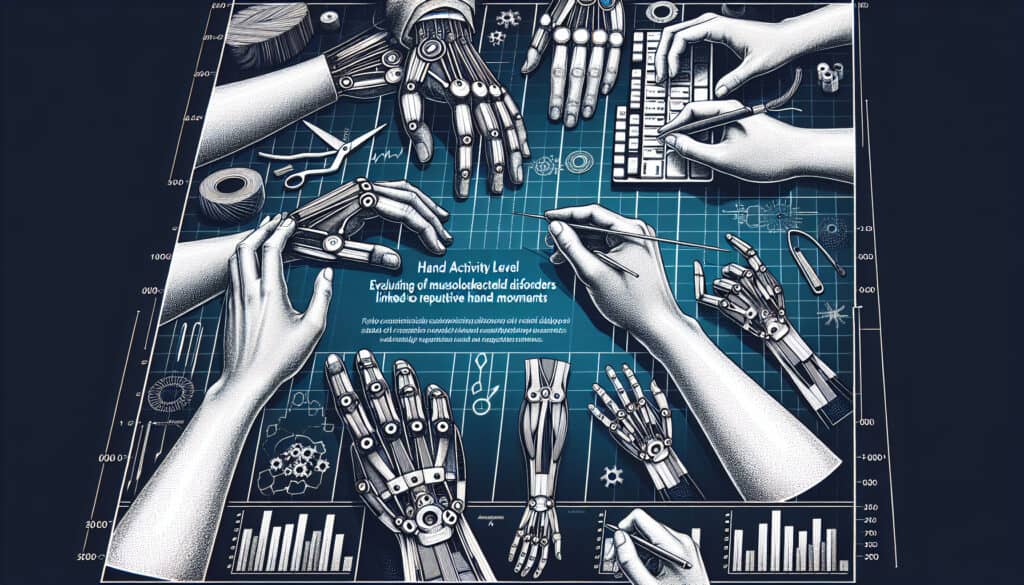Evaluar el riesgo de trastornos musculoesqueléticos asociados al trabajo manual repetitivo.
- Metodologías: Clientes y marketing, Economía
HAL (Nivel de actividad de las manos)

HAL (Nivel de actividad de las manos)
- Mejora continua, Ergonomía, Human Factors, Ingeniería de factores humanos (HFE), Manufactura esbelta, Mejora de procesos, Gestión de calidad, Gestión de riesgos, Seguridad
Objetivo:
Cómo se utiliza:
- A rating scale that combines the frequency of hand exertions and the duty cycle to assess the level of hand activity in a job. It is used to identify jobs with a high risk of hand and wrist injuries.
Ventajas
- Provides a quantitative measure of hand activity; Helps to identify high-risk jobs.
Contras
- Can be subjective and difficult to rate accurately; Does not account for all risk factors.
Categorías:
- Ergonomía, Gestión de riesgos
Ideal para:
- Assessing the ergonomic risk of a manufacturing or assembly line job.
The Hand Activity Level (HAL) methodology is often utilized during the design phase of products and manufacturing processes where the risk of repetitive strain injuries is high, specifically in industries such as automotive, electronics, and consumer goods manufacturing. In these sectors, assessing ergonomic risks is paramount for compliance with labor regulations and enhancing worker safety and productivity. The HAL rating employs a systematic approach to quantifying the intensity of hand actions, combining the frequency of hand movements with the duty cycle to generate a comprehensive assessment of hand activity throughout various tasks. This quantitative measure allows design engineers and ergonomists to identify specific jobs that exceed recommended thresholds, channeling efforts towards ergonomically sound solutions like redesigning workstations, introducing assistive tools, or implementing job rotation to mitigate risks. It is typically initiated by ergonomists or health and safety professionals collaborating with design teams, operation managers, and workers themselves, ensuring an inclusive approach that incorporates feedback from those directly affected. Additionally, the methodology facilitates benchmarking across similar job functions and environments, helping organizations set challenges for continuous improvement in workplace ergonomics. Data generated from HAL assessments may also serve as evidence for business cases related to healthcare cost reductions, workforce optimization, and enhanced employee well-being, contributing to an organization’s sustainability goals.
Pasos clave de esta metodología
- Determine the frequency of hand exertions during the job cycle.
- Assess the duty cycle by calculating the percentage of time hands are actively engaged.
- Multiply the frequency of exertions by the duty cycle to derive the HAL rating.
- Interpret the HAL rating in relation to established ergonomic risk thresholds.
- Identify specific tasks within the job that contribute to elevated HAL ratings.
- Recommend ergonomic interventions based on the analyzed HAL ratings.
Consejos profesionales
- Integrate real-time monitoring tools with HAL analysis to capture immediate data on hand activity, allowing for dynamic adjustments in job design.
- Combine HAL ratings with qualitative assessments from workers about their experiences to identify contextual factors that may elevate risk beyond numerical data.
- Utilize historical HAL data across similar tasks to benchmark and predict potential risks in new job designs, facilitating proactive ergonomics improvements.
Leer y comparar varias metodologías, recomendamos el
> Amplio repositorio de metodologías <
junto con otras más de 400 metodologías.
Sus comentarios sobre esta metodología o información adicional son bienvenidos en la dirección sección de comentarios ↓ , así como cualquier idea o enlace relacionado con la ingeniería.
Contexto histórico
1986
(si se desconoce la fecha o no es relevante, por ejemplo "mecánica de fluidos", se ofrece una estimación redondeada de su notable aparición)

Publicaciones relacionadas
Programa Maestro de Producción (MPS)
Personalización masiva
Embudo de marketing
Auditoría de marketing
Índice MAPO (Movimiento y Asistencia de Pacientes Hospitalizados)
Planificación de recursos de fabricación (MRP II)